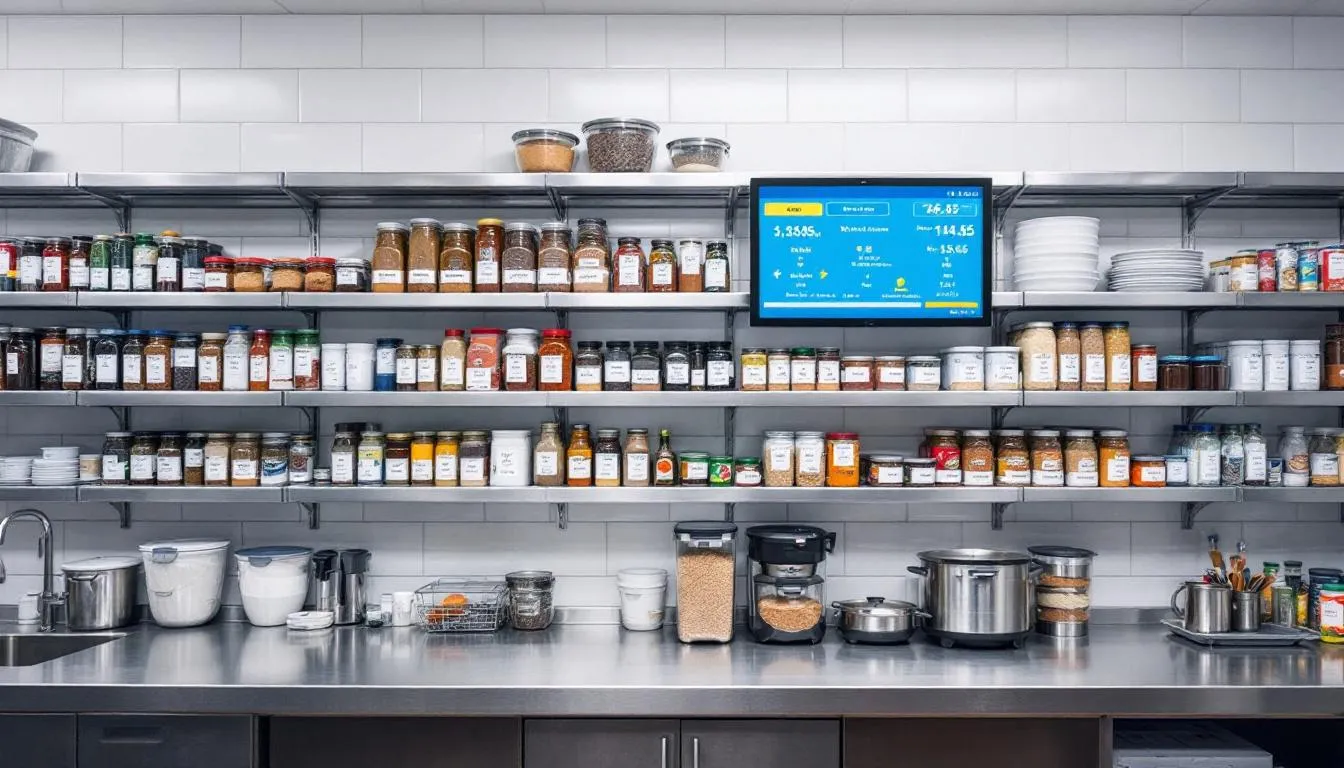Hotel Inventory Problems: 7 Critical Issues Killing Your Revenue
 Mika Takahashi
Mika Takahashi Mika Takahashi
Mika TakahashiHotel inventory problems are costing the hospitality industry billions each year, yet many hotels keep facing the same frustrating challenges. From overbooking nightmares that sour guest experiences to food waste eating away at profits, these issues pile up and can seriously hurt your bottom line.
Today’s hotel inventory management isn’t as simple as it used to be. With multiple booking platforms, real-time updates, and a web of integrated technology systems, managing inventory offers both great opportunities and tricky pitfalls. When done well, effective inventory management can boost your revenue per available room by 7-10%. But when it’s mismanaged, it leads to unhappy guests, operational headaches, and big financial losses.
In this detailed guide, we’ll walk through the seven most pressing hotel inventory problems that hotels worldwide are battling. We’ll dig into how these issues impact your finances and guest satisfaction, and share proven strategies to overhaul your inventory management for lasting success in 2025.
Hotel inventory management refers to the full process of tracking, controlling, and optimizing all sellable assets and operational resources within your property. When this system breaks down or runs inefficiently, it triggers a domino effect of hotel inventory problems that touch every part of your operations.

To get a handle on hotel inventory problems, it helps to separate them into two key groups:
Primary inventory is your main revenue driver — your hotel rooms and their availability across all your distribution channels. Problems here hit your room revenue directly through overbooking, underbooking, or pricing mistakes that can cost thousands in lost bookings or compensation.
Secondary inventory covers all the operational supplies that keep guests happy — food and beverage stock, linens, housekeeping supplies, amenities, and maintenance materials. When secondary inventory is mismanaged, you face stockouts, waste, and service hiccups that tank guest satisfaction and hike operational costs.
Hotel inventory problems rarely pop up alone. Take your property management system failing to update room availability in real time: that overbooking isn’t just a booking error. It triggers rushed housekeeping, frustrated guests, costly compensation, and negative reviews that hurt future bookings.
Similarly, if your food and beverage inventory tracking falls short, you’ll see immediate revenue lost from menu items being unavailable, emergency purchases at inflated prices, and guest dissatisfaction that spills over to the whole property’s reputation.
The fallout from poor inventory management goes way beyond operational expenses. When guests find basic amenities missing, face delayed check-ins because housekeeping is short on supplies, or see limited restaurant options due to food shortages, it translates into:
Research shows that bad inventory management can affect up to 20% of guest stays at poorly managed hotels, dragging down both immediate revenue and your brand’s long-term health.
No matter the size of your hotel — boutique or chain — these seven issues are the usual suspects causing the biggest headaches and financial damage. Each one can seriously hurt your hotel’s bottom line and guest satisfaction.
It’s important to see how these problems connect. For example, poor demand forecasting doesn’t just mess with room inventory; it ripples through housekeeping supplies, food waste, and staff scheduling, making your whole operation less efficient.
As we head into 2025, with rising costs, higher guest expectations, and tougher competition, tackling these problems head-on is more important than ever.
Overbooking disasters grabbed headlines during Christmas 2024 when some big hotel chains had to pay out over $50,000 in guest compensation per property. These situations usually happen when automated overbooking systems, meant to cover no-shows, get overwhelmed by unexpectedly high arrivals during peak times.

The costs add up quickly when you have to “walk” guests to other hotels, including:
On the flip side, underbooking during hot demand periods means missed revenue opportunities. In summer 2024, many coastal hotels lost out because they kept booking limits low while competitors sold out at premium prices.
Hotels still relying on manual room tracking or systems with slow updates between property management and distribution channels are more prone to booking errors, especially during fast-paced booking windows when real time data is crucial.
When your property management system and channel manager don’t sync properly, you get dangerous gaps in real time inventory tracking. Your PMS might update room availability, but if the channel manager doesn’t reflect that instantly across booking sites, double bookings happen — and they’re costly to fix.
Even a few minutes’ delay in updating availability can lead to overselling during busy booking periods when travelers book across multiple platforms quickly.
Double bookings create chaos. Front desk staff deal with unhappy guests, reservations scramble for alternatives, often at premium rates, wiping out profits.
Conflicting inventory reports between housekeeping and front desk, or mismatched food and beverage stock levels, turn decision-making into guesswork instead of data-driven action.
These inaccuracies also block effective revenue management, preventing you from optimizing pricing or smartly allocating inventory across channels.
When your rates and availability aren’t consistent across Booking.com, Expedia, and your own direct booking site, guests get confused and may go elsewhere.
Relying too much on online travel agencies means paying steep commissions — often 15-25% of room revenue. Without a strong direct booking strategy, you lose out on higher-margin bookings and build guest loyalty for the OTAs instead of your hotel.
Misallocating inventory across channels leads to poor revenue results. Offering too many discounted rooms on OTAs while keeping higher prices direct means you miss chances to maximize revenue per room.
Lost direct bookings are a big long-term cost. Guests who book through OTAs often stay loyal to those platforms, not your hotel, increasing ongoing commission fees.
A smart distribution strategy needs advanced inventory management software that updates rates and availability in real time across all channels while letting you control inventory allocation based on profitability.
Summer 2024 saw many hotels either overstaffed with excess inventory or understaffed with too few supplies because they misread demand. Hotels that didn’t adapt to changing travel patterns post-pandemic lost revenue due to poor capacity planning.
Unexpected local events like conferences or festivals can cause sudden demand spikes. Hotels without strong demand forecasting can’t adjust inventory fast enough to cash in on these opportunities.
Relying solely on pre-2020 data is risky now. Historical patterns no longer predict demand accurately, leading to miscalculations in room and ancillary service needs.
Poor occupancy forecasts also mess with staff scheduling, causing labor inefficiencies and higher costs.
Modern forecasting blends historical data, event calendars, competitor pricing, weather, and economic trends. The best hotel inventory management systems use AI to analyze these complex factors for better predictions.
Mid-sized hotel restaurants typically lose $2,000 to $4,000 monthly due to spoiled perishables — a big hit to profit margins. Causes include poor demand forecasting, bad storage, and lack of integration between kitchen operations and occupancy forecasts.
Running out of popular menu items during busy weekends means lost revenue and disappointed guests who might go elsewhere to eat.
Delivery delays from poor supplier coordination make things worse, especially for perishables needing tight timing. Either you waste food or run out.
Fragmented tracking between restaurant and room service leads to duplicate orders and inconsistent availability, making purchasing decisions harder.
Effective food and beverage inventory management uses occupancy rates, guest preferences, seasonal menus, and local events to forecast accurately. Modern hotel inventory management software ties all this data together to improve purchasing and prep.

Nothing frustrates guests like arriving to a room without fresh towels or amenities. These shortages usually stem from poor forecasting and laundry schedules that don’t keep up with high turnover.
Running out of cleaning supplies delays room turnovers, leading to longer check-in waits and sometimes costly guest compensation.
Inconsistent amenity stocking makes guests feel the hotel is disorganized, hurting satisfaction scores.
Emergency purchases at last minute often cost 2-3 times more, throwing off your budget.
Good housekeeping inventory management uses automated reordering based on occupancy forecasts, past consumption, and supplier lead times to keep stock balanced without overstocking.
Disconnected systems create data silos that make life tough. When your PMS doesn’t talk to inventory tracking, channel management, or POS systems, staff juggle multiple platforms manually — increasing errors and wasting time.
Manual processes cause more mistakes than automated ones. Paper tracking or manual data entry lead to inventory mismatches, booking errors, and missed revenue opportunities.
Old software with slow updates blocks real-time visibility, leaving managers blind to urgent issues.
Frustrated staff using clunky tools lose productivity and job satisfaction, which can increase turnover.
Modern hotel inventory management systems use cloud-based platforms that integrate all operations in real time, giving unified dashboards for tracking, automated ordering, and performance insights.
Hotel inventory issues hit your wallet hard — far beyond day-to-day expenses. Mid-sized hotels can lose $50,000 or more yearly from inventory inefficiencies. Larger properties face even bigger losses, sometimes six figures annually.

Here’s how poor inventory management chips away at your revenue:
Room Revenue Impact:
Food and Beverage Losses:
Operational Cost Increases:
Guest satisfaction scores drop 1-2 points on booking platforms when inventory problems disrupt service. Though small, this drop has big effects:
Hotels with strong inventory management enjoy clear advantages:
Revenue Optimization: 7-10% higher revenue per available room through dynamic pricing and smart allocation.
Operational Efficiency: 25% less labor cost and fewer guest complaints.
Market Positioning: Better OTA relationships and promotional opportunities.
Guest Loyalty: Consistent experiences boost repeat bookings and reduce marketing spend.
Fixing hotel inventory issues takes a holistic approach combining technology, process improvements, and staff training. The best results come from tackling root causes, not just symptoms.
The most successful hotels upgrade technology, train teams, refine processes, and monitor performance continuously.
Cloud-based property management systems with real time inventory tracking are the backbone of modern hotel inventory management. These platforms centralize room availability, pricing, and guest info for all departments and channels.
Channel manager integration keeps your inventory synced across OTAs, direct booking,